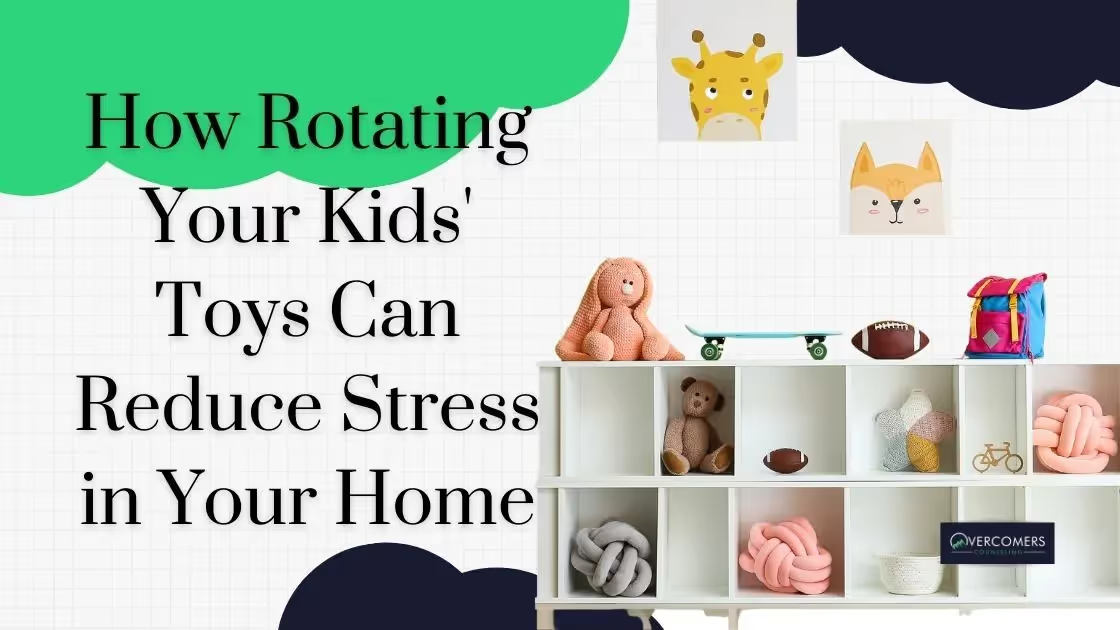So What is Toy Rotation and How do You do it?Toy rotation is a strategy where instead of having all the toys in the house out at once, you group similar...

So What is Toy Rotation and How do You do it?
Toy rotation is a strategy where instead of having all the toys in the house out at once, you group similar toys into smaller, more manageable groups to play with and switch out on a regular basis.
Here's how to begin:
Start by first gathering all the toys in one place.
Take a look at what can be donated or stored away.
Group similar toys together. For example, put all the legos together, all the baby dolls together, etc.
Choose a collection of toys to have out.
Store the remainder out of sight to be switched out at a later date.
Some families chose to rotate the toys out every 5-10 days while others chose to rotate them once a month.
Find a rotation schedule that works best for your family and make it a fun event to look forward to!
The Unexpected Benefits of Toy Rotation
Kids play with toys for longer
Too many toys often lead to difficulty focusing and behavioral problems due to frustration and feeling overwhelmed by choices.
With the reduced stress and anxiety that comes with toy rotation, kids can play more freely and engage in more meaningful play.
This lends itself to more creativity, which keeps their minds engaged for much longer.
Now with more families working from home more than ever, the increase in independent play is a win-win and stress reducer for all!
Parents have noted that after implementing a toy rotation schedule in their home they have less stress and anxiety about constantly keeping the house clean.
With fewer toys to pick up at the end of the day, the family has more time to do the things they truly love and enjoy!
The visible clutter can, for some, be overstimulating.
Many mothers have said that less clutter greatly impacted their postpartum anxiety and depression.

With fewer toys in the play area, children now have the opportunity to move and explore the space with their toys in new ways.
Crawling, throwing and rolling toys along the ground are all fun and different ways to engage with the same toys in the open space.
The play area becomes more inviting as it is removed from the extra distractions.
Not only is there more room to move about, but now playmates can more easily enjoy the stress-free environment as well.
When the toys are rotated and a new collection of toys is introduced, there is often a period of rediscovery.
Previously purchased toys seem brand new all over again which is an instant mood booster for parents and kids.
With old toys seeming new again and again, the need to constantly replace and buy new toys is significantly diminished.
This is a major stress-reliever on the household budget and allows more financial freedom for other fun family activities.
There truly is no limit to the many benefits your family may encounter with toy rotation.
With less stress in the home, families are able to thrive as individuals and as a household unit.
We'd love to hear your story of how you reduced stress and overcame battles at playtime with a toy rotation.
Leave a comment below for how this game-changing strategy has changed your life!
https://www.onehundredtoys.com/blogs/news/toy-rotation
https://www.greenchildmagazine.com/rotating-toys/
You can teach your child persistence by modeling the behavior yourself, encouraging them to take risks, setting goals and tracking progress, praising effort, and providing support and guidance.